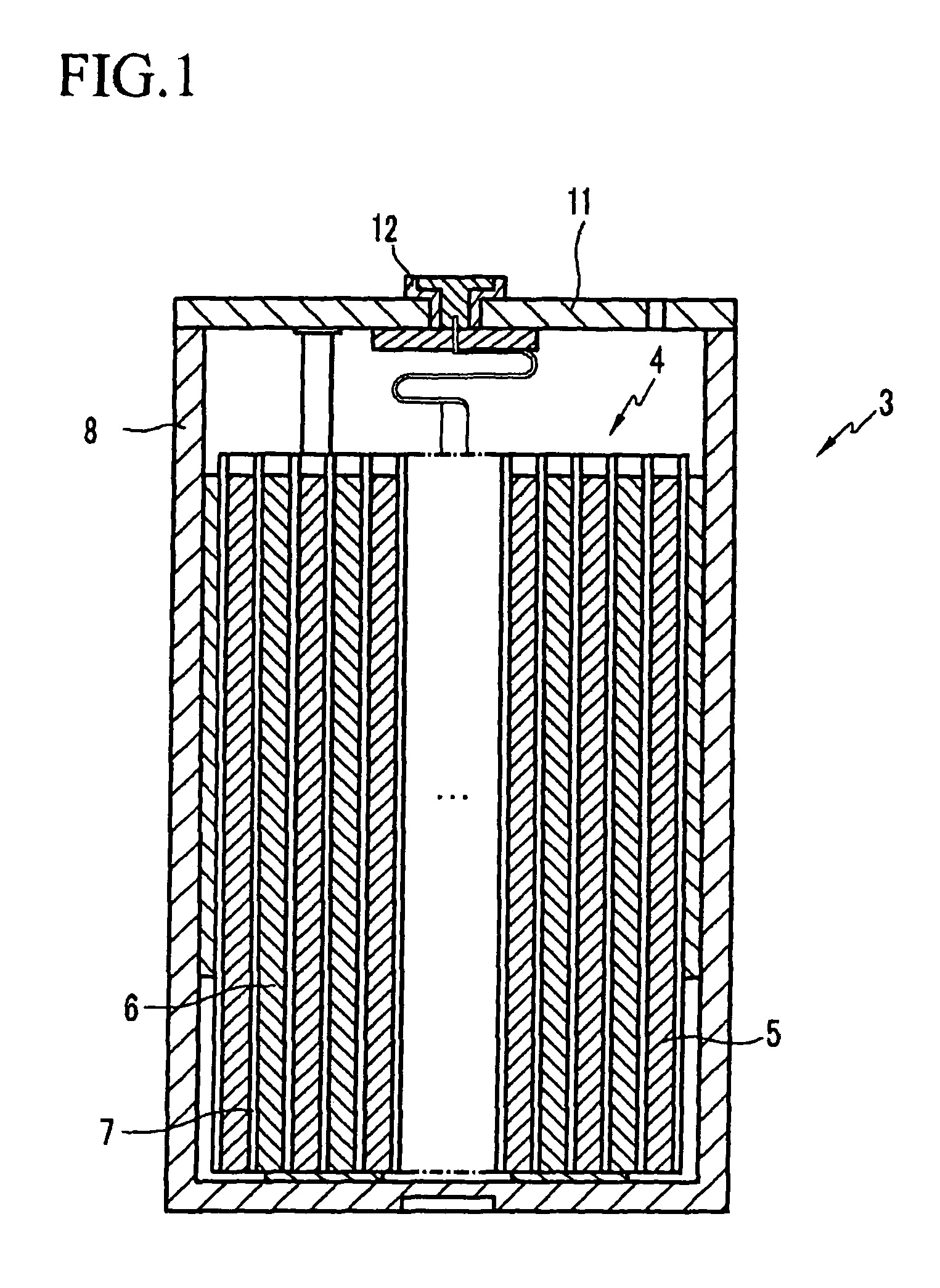Conductive agent-positive active material composite for lithium secondary battery, method of preparing the same, and positive electrode and lithium secondary battery comprising the same
a technology of active materials and positive electrodes, which is applied in the direction of non-metal conductors, cell components, conductors, etc., can solve the problems of difficult formation into a desired structure, low capacity of manganese-based materials, and high cost of cobalt-based materials such as licoosub>2 /sub> and licoosub>2 /sub>. , to achieve the effect of increasing the active mass density
- Summary
- Abstract
- Description
- Claims
- Application Information
AI Technical Summary
Benefits of technology
Problems solved by technology
Method used
Image
Examples
example 1
[0071]Ketjen black (average specific surface of 1417 m2 / g, tap density of 0.06 g / cc) and Super P (manufactured by MMM carbon Company) (average specific surface area of 66.59 m2 / g, tap density of 0.12 g / cc) were mixed. The weight ratio of Ketjen black to Super P was 25:75. The mixture was then introduced into a mechanofusion machine (manufactured by HOSOKAWA Company) along with 1800 g LiNi0.81Co0.15Al0.04O2. The contents of the mechanofusion machine was then subjected to mechanofusion at 2000 rpm for 90 minutes after loading at 10 kW to provide a composite. The resulting composite had a mixed weight ratio of positive active material to conductive agent of 95:5.
example 2
[0072]A composite was prepared as in Example 1, except that the weight ratio of Ketjen black (average specific surface area of 1417 m2 / g, tap density of 0.06 g / cc) to Super P (manufactured by MMM carbon Company) (average specific surface area of 66.59 m2 / g, tap density of 0.12 g / cc) was 75:25.
example 3
[0073]A composite was prepared as in Example 1, except that the weight ratio of Ketjen black (average specific surface area of 1417 m2 / g, tap density of 0.06 g / cc) to Super P (manufactured by MMM carbon Company) (average specific surface area of 66.59 m2 / g, tap density of 0.12 g / cc) was 50:50.
PUM
| Property | Measurement | Unit |
|---|---|---|
| tap density | aaaaa | aaaaa |
| specific surface area | aaaaa | aaaaa |
| thickness | aaaaa | aaaaa |
Abstract
Description
Claims
Application Information
 Login to View More
Login to View More - R&D
- Intellectual Property
- Life Sciences
- Materials
- Tech Scout
- Unparalleled Data Quality
- Higher Quality Content
- 60% Fewer Hallucinations
Browse by: Latest US Patents, China's latest patents, Technical Efficacy Thesaurus, Application Domain, Technology Topic, Popular Technical Reports.
© 2025 PatSnap. All rights reserved.Legal|Privacy policy|Modern Slavery Act Transparency Statement|Sitemap|About US| Contact US: help@patsnap.com



